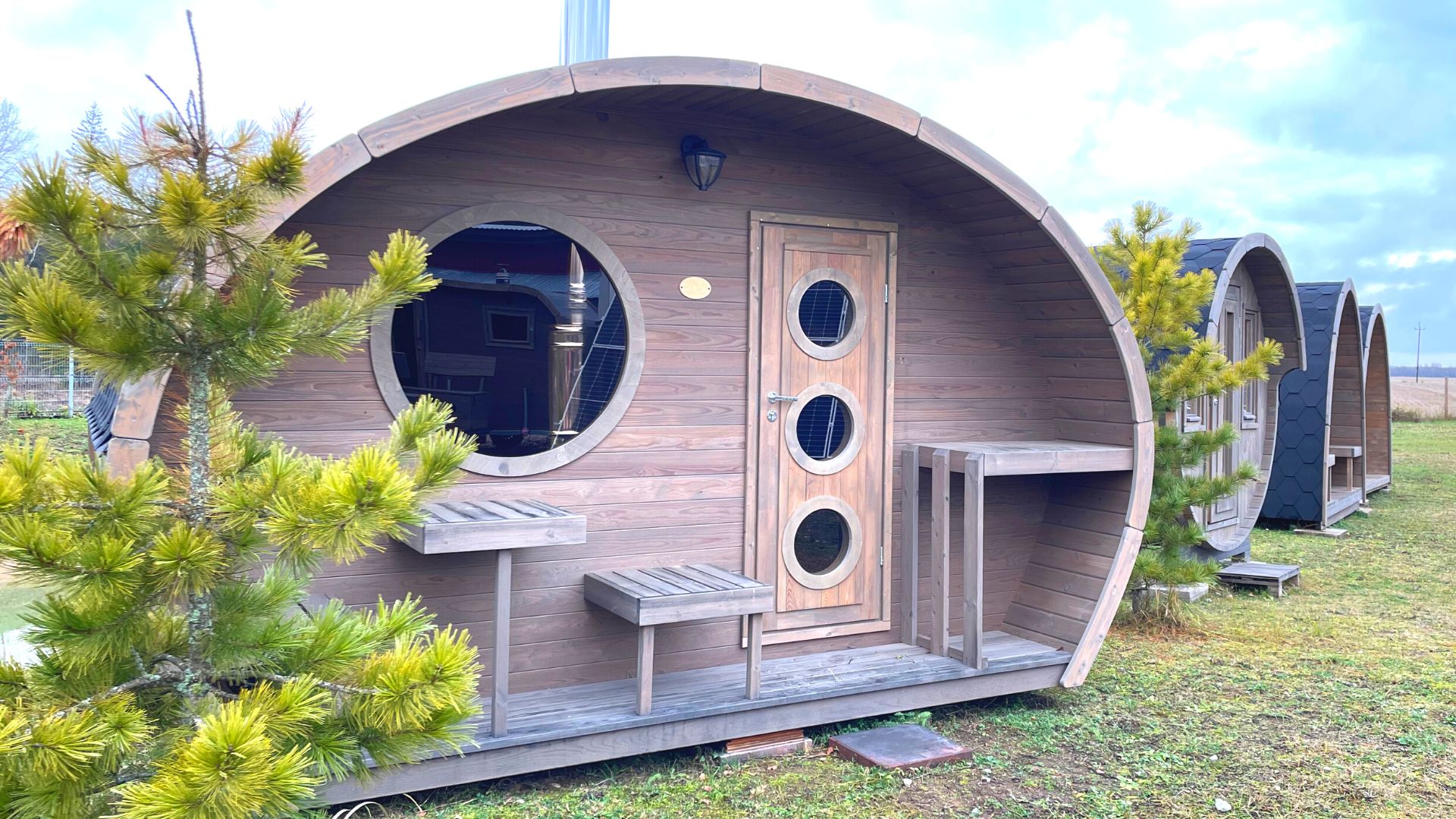If you’re in the market for a sauna, you may be wondering whether an indoor vs outdoor sauna is the way to go. The truth is, both have their advantages and disadvantages. In this article, we’ll compare indoor and outdoor models head-to-head so that you can make an informed decision.

So, what’s the difference between an indoor vs outdoor sauna?
While the location is the most obvious difference between indoor and outdoor saunas, there is more to it than that. Indoor saunas are typically built directly into your home’s infrastructure, often placed by home gyms, basements, or spas (if you’re lucky enough to own one). They are often designed to provide a seamless passage from any room in your house into a sauna.
On the other hand, outdoor saunas are usually freestanding structures that are built in backyards, often near a pool or lake. The vast majority are timber construction, and they usually feature some form of glass wall or window so that users can enjoy the scenery.

Pros of an outdoor sauna
- No interior space limitations
- Easy access to proper ventilation
- Easier access to potentially gorgeous views
- More natural light
- It doesn’t heat up the whole house – so you can use it year round, unlike an indoor sauna which is impractical in Summer months.
- Don’t usually require planning
- Don’t take up any space within the house, leaving you more room for bathrooms/bedrooms so generally retaining the value of your home
- You can tie it into a dedicated area with say, a barbecue or hot tub.
With no interior space limitations and easy access to proper ventilation, you have a lot of options for customising an outdoor sauna. Compared to indoor models. Outdoor saunas can also take advantage of the views from your home or cottage backyard. The most common shape is the popular barrel sauna shape, however they come in many variations and sizes.
The more luxurious outdoor saunas usually boast a glass wall or large windows. This is not only to make the best use of natural light, but also to take advantage of any scenic garden/landscape views. To retain your privacy, these window panes can be tinted or mirrored to ensure nobody sees in.
The vast majority of outdoor sauna kits don’t require planning permission or special foundations, either – making them a great way to get a traditional sauna experience whilst potentially raising the value of your home. They are also very easy to ventilate since you can choose more or less any wall to install a vent out from.
Cons of an outdoor sauna
- You may have to face poor weather conditions to reach the sauna
- Depending on your choice of heater, lighting, or whether you want a shower next to/within the building etc you may need to reroute electricity or water to the out building
- More exposed to weather and will need exterior treating/maintenance from time to time
- Depending on how overlooked your garden is, it may offer less privacy for you.
Outdoor saunas do come with some disadvantages too. The main one being that you will have to brave the weather come rain, shine or snow! To some people this is all a part of the traditional sauna experience, and many love the temperature difference of coming from such a hot environment into a cold one. Nothing compares to the potential views of an outdoor sauna. Imagine relaxing and unwinding in your new home sauna while taking in the views of the lake or pool in your backyard. With additional windows or full glass back wall back, you’ll be able to relax in the natural surroundings of your backyard.
You may also need to consider how to bring an electricity supply (or water and drainage) to your sauna area if you’re looking to install lights, sound systems, shower units etc. This isn’t always straightforward when you’re building in your garden.
Finally, whilst it’s wonderful to enjoy a natural scene/garden space, you may find an outdoor sauna offers less privacy. If you have neighbours overlooking your garden, you can usually overcome this with some careful positioning.

Pros of an indoor sauna
- Excellent way to utilise unused space such as in basements, or if you have a larger bathroom
- Easily accessible in any weather
- Easy to route plumbing and wiring to it as needed
- Indoor saunas provide additional privacy
- It can heat up the entire house (see also cons) – which is fantastic in Winter months as it can save on your heating bills
If you already have a large indoor space in your house that’s underutilised, an indoor sauna can be a terrific option. The most common location for indoor saunas is either in a master bathroom or in the basement. For a lucky few, if you have a home gym or spa area, then that is an ideal spot too!
Indoor sauna’s offer a lot of privacy compared to their outdoor counterparts, and usually mean you can seamlessly get to a shower space without having to go outside. They are also very straightforward to link up to plumbing and electrics, but always be sure to consult a qualified tradesperson.
Cons of an indoor sauna
- May be subject to further building control/fire regulations
- Depending on location, it may be more difficult to achieve proper ventilation
- Waterproof/moisture barrier required to prevent damage to the property
- It heats up the house when in use. Whilst this can be great in winter time, it makes using an indoor sauna impractical in summer months
Whilst indoor models are straightforward to install, it’s always worth mentioning they do require an additional vapour barrier. Outdoor saunas, on the other hand, offer easy ventilation and no space restrictions. You can build a unique sauna without the restrictions of a roof or walls.
Indoor vs Outdoor sauna; which is right for your home?
Ultimately, when it comes to indoor versus outdoor saunas, the right sauna will always depend on your circumstances and your property. The cost of purchase and installation is about the same and both can be customised to fit your personal preferences. That being said, outdoor saunas tend to have a slight advantage since they don’t use up any indoor space which could otherwise mean a bigger bathroom, extra bedroom etc,. They are also a little more hassle free since there isn’t any planning permission required and you don’t have the added headache of vapour barriers to consider. Ultimately which you choose is up to you. Here are our key pros and cons:


At our Neptune, we sell a variety outdoor sauna kits making it easier than ever to build a custom home sauna in your garden. With our sauna kits, you get easy to follow instructions, meaning that any accomplished DIYer can build a beautiful thermo-treated outdoor sauna.

Looking for your own home sauna?
Browse our beautiful collection of outdoor sauna buildings.
 +372 5552 6261
+372 5552 6261
